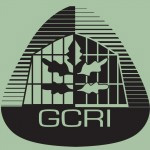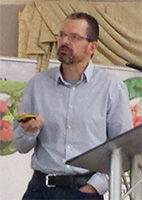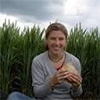
IPM: The 10 year plan
Radical changes in pest and disease management will be required over the next decade to fill the gap being left by legislative restrictions on pesticide use and the evolution of pest and disease resistance. There will be a growing demand to develop new IPM solutions that are practical and effective at the grower level.
IPM will no longer be a luxury but a necessity for all producers. The 2015 AAB conference explored factors that will both drive and constrain further advancement of the subject over the next 10 years taking into account policy issues, technical developments and commercial uptake by farmers and growers. There were a total of 30 papers presented by policy makers, experienced researchers, product suppliers, young scientists and IPM practitioners. These will be posted on the AAB website in the near future.
 The conference incorporated the GCRI Trust’s biennial Bewley Lecture which was celebrating 100 years of research in UK protected crops. Dr Paul Sopp, Chairman of the GCRI Trust, explained that the lectures are named in honour of W F Bewley CBE, who masterminded the establishment of the Glasshouse Crops Research Institute (GCRI) at Littlehampton in 1954. The lectures aim to predict future trends in international agriculture and horticulture practices. Further information can be found at http://www.emr.ac.uk/knowledge-exchange/gcri-trust.
The conference incorporated the GCRI Trust’s biennial Bewley Lecture which was celebrating 100 years of research in UK protected crops. Dr Paul Sopp, Chairman of the GCRI Trust, explained that the lectures are named in honour of W F Bewley CBE, who masterminded the establishment of the Glasshouse Crops Research Institute (GCRI) at Littlehampton in 1954. The lectures aim to predict future trends in international agriculture and horticulture practices. Further information can be found at http://www.emr.ac.uk/knowledge-exchange/gcri-trust.
 Keynote papers were presented by Dr David Chandler (image left) and Dr Bill Clark, who provided their visions of how pest and disease management practice may be expected to change during the next 10 years. Dr Chandler, Warwick University, is a world expert on entomopathogenic fungi and has advised both the European Parliament and the US Department of Agriculture on matters related to IPM. Dr Bill Clark, Commercial Technical Director at NIAB, has a long career in crop protection and is internationally known for his knowledge of disease control strategies, IPM and EU pesticide policy.
Keynote papers were presented by Dr David Chandler (image left) and Dr Bill Clark, who provided their visions of how pest and disease management practice may be expected to change during the next 10 years. Dr Chandler, Warwick University, is a world expert on entomopathogenic fungi and has advised both the European Parliament and the US Department of Agriculture on matters related to IPM. Dr Bill Clark, Commercial Technical Director at NIAB, has a long career in crop protection and is internationally known for his knowledge of disease control strategies, IPM and EU pesticide policy.

"It was fantastic to move in a new circle and I have come away with many valuable contacts, several collaboration opportunities and a head full of ideas."
Dr Kat Bruce, Director, NatureMetrics


